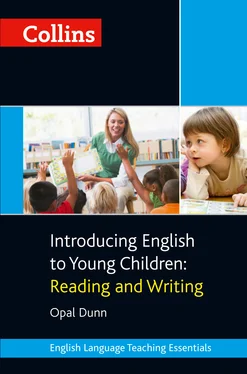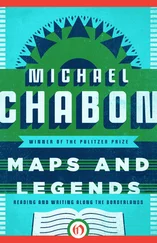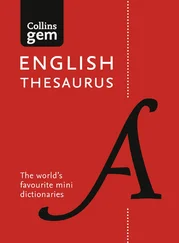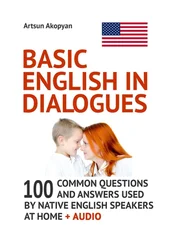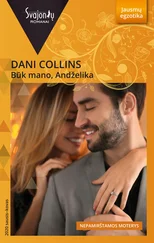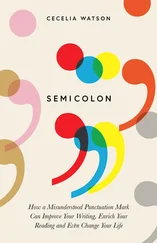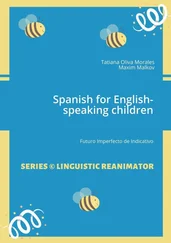The art of a skilled teacher is getting the right balance, by providing structure whilst supporting autonomy .
(Stewart)
1.5 Free-choice time
Young children need repetition. Children, without adult help or intervention, repeat games or activities until they gain ownership and control over them. This can most easily be seen in the playground during break time where – either by themselves, in pairs or in a small group – children play the same game with the same rules over and over again. Children need opportunities to experience repetition like this in the English classroom and also at home if they are to gain ownership and control.
‘Flow’ is a state of complete immersion in an activity .
(Csikszentmihalyi)
‘Free play’ was valued by Froebel, Vygotsky, Montessori and Bruner. In the 1960s Bruce renamed it ‘free-flow play’, to include the work on ‘flow’ by the psychologist Csikszentmihalyi.
In ‘flow’ experiences:
Children are totally in control and self-regulated.
They are completely immersed and engaged in intense activity
Children’s bodies and minds are stretched in a voluntary and possibly unconscious effort to achieve something.
They are free from adult direction.
They are confirming what they know and absorbing it more deeply
They gain self-satisfaction, confidence and an inner feeling of happiness.
Their concentration is so deep and they are so engaged that they are not aware of themselves.
Their involvement in the activity is unconscious, like breathing – they don’t have to think about it.
‘Flow’ can often occur during activities or games and is associated with achievement and intrinsic self-satisfaction, giving confidence and a feeling of happiness. When it occurs and the length of time it lasts cannot be predicted – all teachers can do is ‘set the scene’ by programming time for free-choice activities. Flow experiences commonly occur in Montessori-type settings, when children are immersed in using game-like materials. Adults may not always notice (or may never have noticed) a child deep in a flow experience.
Consider the following description of how children might modify an activity once they are immersed in a flow experience:
The teacher gives the children a complete set of pre-prepared word cards (such as foot and ball ) which make up compound words (such as football ). The children are asked to take turns putting word cards together to make compounds. The set might include:
foot ball snow man cup cake cow boy butter fly sun flower toe nail bed room black bird
After a while, the children decide to change the activity to a type of memory game, putting all the cards face down. They turn the cards over one at a time. Children have to keep all the cards in their hand if they can’t make a compound word, or put one down if they can. The winner is the child with the most compound words.
The value of revisiting an activity or game for young children, free from adult direction, is often undervalued in classrooms. Free-flow experiences can include book browsing, which gives children an opportunity to revisit and reread a book independently, organising and controlling their relationship with the story. Through this self-regulated, fluid and adult-free experience, children are able to confirm what they know and absorb it more deeply.
Too much adult-led structure can stifle originality and the self-motivation needed to think and create. A class with only teacher-led activities which do not include the Playful Approach can stunt children’s innate passion. As well as this, frequent chances to repeat activities are needed so that children have the opportunity to repeat patterns – which is crucial for learning.
Free-flow play is an integrating mechanism which brings together everything we learn, know, feel and understand .
(Bruce)
1.5.1 Planning free-choice activities
Time is limited in many English class programmes, but most teachers manage to fit in a free-choice period at least once a month (or if lessons are daily, once every two weeks). In some schools free choice takes up a major part of the lesson time, often taking place after the warm up, or after the summing up at the end of the lesson. In larger classes, children can be divided into two groups, one working with the teacher and the other enjoying free choice. The group changeover can take place within a single lesson, or in the next lesson.
Where teachers cannot fit a free-choice session into their programme, they can make opportunities for children to take activities home to help them revisit a game, book or other activity and experience a sense of flow.
Happiness depends, as nature shows, less on exterior things than most suppose .
(Anon)
Discussion about which free-choice activities will be available in the allocated lesson is an important part of the flow experience. In free-choice situations, children have the freedom to make their own choice from the activities on offer, including book browsing and games that they want to revisit. Teachers need to listen to children’s requests as well as making their own suggestions and noticing children’s reactions to them. This reflective preparation plays an important role for children.
Young children are used to self-regulating their play on screen. They are completely absorbed, returning again and again to the same video game without adult intervention or even sometimes understanding the accompanying language. They manipulate the game until they have mastered it and then happily move on to the next level or game without taking a break. This is another type of flow experience, which can set the level of children’s expectations for off-screen activities.
‘Flow’ has been associated with increased performance in work, sport and in school .
(Stewart)
In free-choice activities children can:
reflect and make choices (critical thinking)
self-initiate
self-motivate
self-manage, working at their own pace
concentrate, persist and remain focused
consolidate their learning, taking it to a deeper level (metacognition skills)
problem solve, discover and rearrange (creativity)
collaborate with a partner or group members (social and emotional growth)
work without interference, except for guidance and encouragement from the teacher when required
work without external pressure (no fixed process) or set aims or goals (no end products)
work without rules, except for usual classroom or game rules (no right or wrong, no need to conform to adult-imposed standards)
harness emotions and find out how to manage them
imagine and insert humour
work on building self-learning strategies
explore new paths
experiment and take risks
repeat activities as often as they like.
1.5.2 Managing free-choice activities
Arranging free-choice activity sessions within an English course helps to further holistic learning, since activities can take place in L1 but are accompanied by a ‘hidden’ English syllabus. It also helps to further develop a positive mindset to learning English, as it helps children feel in control of their learning.
During free choice some children revert to using ‘private talk’, thinking aloud and giving a running commentary to themselves (but for all to hear) about their activity. Vygotsky believed this unconscious, private talk helps to develop thought and self-regulation. It can be in L1 or English or a combination of both, entailing ‘code-switching’ to fit words from one language into the other where necessary. Private speech can reveal a lot about a child’s inner thinking and level of understanding, and with maturity this external talk becomes internalised.
Читать дальше
